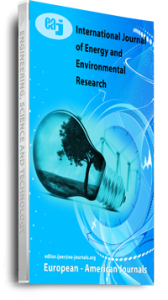The move towards a de-carbonised world, driven partly by climate science and partly by the business opportunities it offers, will need the promotion of environmentally friendly alternatives, if an acceptable stabilisation level of atmospheric carbon dioxide is to be achieved. This requires the harnessing and use of natural resources that produce no air pollution or greenhouse gases and provides comfortable coexistence of human, livestock, and plants. This study reviews the energy-using technologies based on natural resources, which are available to and applicable in the farming industry. Among these are greenhouses, which are necessary for the growth of some plants (i.e., vegetables, flowers, etc.) in severe climates. However, greenhouses require some air conditioning process to control their temperature and relative humidity to suit specific plants. To achieve this, a novel air humidifier and/or dehumidifier systems using mop fans had been designed and employed in an experimental greenhouse to evaluate its performance under a controlled environment. This device helped to reduce the energy consumption of the greenhouse whilst providing a pleasant environment for the plants inside the greenhouse. The system was designed taking into account the meteorological conditions, which affect the environment inside the greenhouse. The performance of the system was monitored over a period of time by measuring the temperature and relative humidity of the greenhouse. Results of the monitoring have shown that the system was able to provide comfortable conditions (temperatures of 16-26oC and relative humidity of 65%) suitable for the plants grown in the experimental greenhouse. It also enabled the minimisation of temperature variation and, hence, avoided the hazard of any sudden climatic change inside the greenhouse.
Keywords: Solar Energy, Solar Radiation, global radiation, greenhouses

